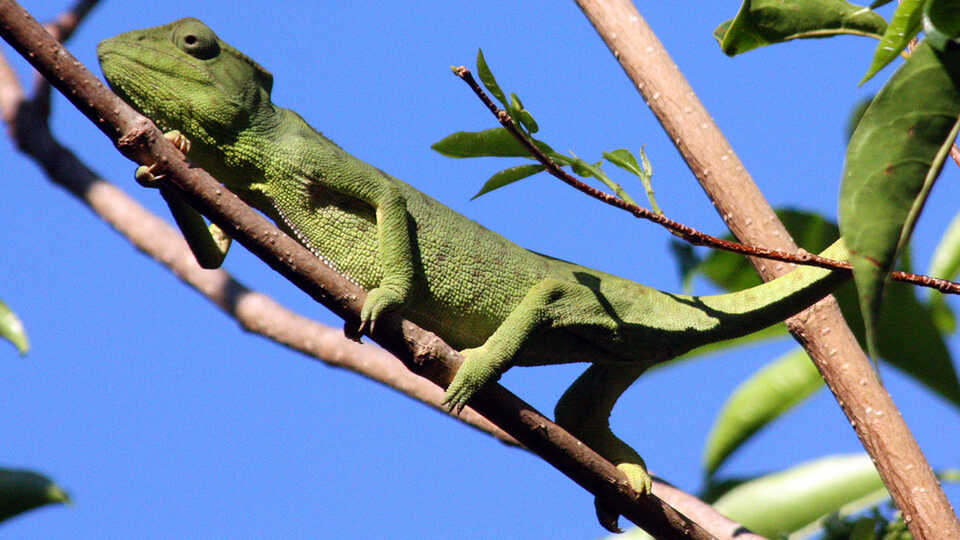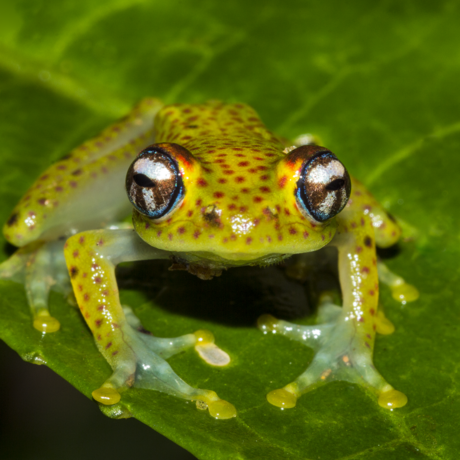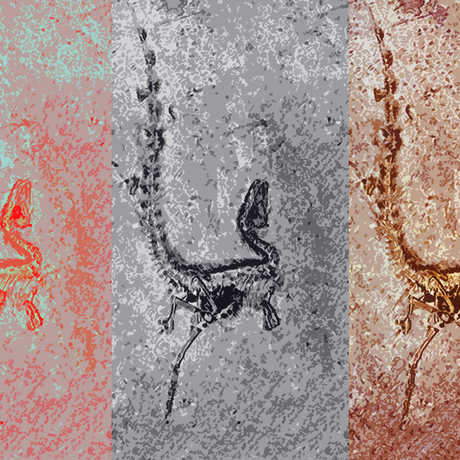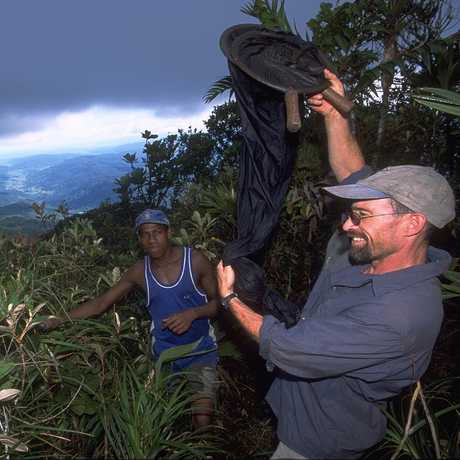Apart from a small number exported legally as pets, Oustalet’s chameleons are endemic to Madagascar, where they enjoy stable population numbers in a variety of habitat types. They’re also found in a number of protected national parks throughout the country, but are abundant enough all over to earn the conservation status of “least concern.”
Oustalet's Chameleon

© Charles J Sharp
This animal is not currently on exhibit in the rainforest.
The Oustalet’s chameleon (Furcifer oustaleti), also known as the Malagasy giant chameleon, lives a mostly sedentary life. It moves very slowly, or not at all, for long stretches of time; this enables it to conserve energy and stay out of view of predators—and also to be a predator itself. When an unsuspecting insect, lizard, or small bird happens by, its extremely long, suction-cup-tipped tongue darts out to snare the meal-to-be. The tongue, which is spring-loaded and shoots forward much like a bow from an arrow, can extend to nearly twice the length of the entire chameleon.
The Oustalet chameleon has a crest of small, triangular spikes running down the length of its back and a long, prehensile tail that it can wrap around branches, use as a counterbalance, or simply curl into a scaly spiral. It also has a third eye on top of its head, although this functions more like a light meter than an instrument of high-definition vision.
This Malagasy giant clocks in as the second heaviest chameleon on Earth, and likely the longest. It’s generally a solitary creature, showing aggression toward other chameleons via rapid color changes and confrontational posturing. It was even recently discovered to be omnivorous (instead of exclusively carnivorous, as was long assumed), as it's partial to munching on certain native shrubs.
Range and Conservation Status
Communicating by Color
Though we often assume they change color to blend in with their surroundings, chameleons use color mostly to regulate their body temperature or to communicate with mates and rivals. Chameleon skin is an intricate, four-layered system containing various pigmented cells called chromatophores, which expand or contract in different proportions on cue from the nervous system. A chameleon looking for a mate will turn one shade, while a chameleon defending its territory will turn another.
Temperature Regulation
Like all chameleons, the Malagasy giant is cold-blooded and can’t regulate its body temperature internally—yet it manages to have one of the widest habitat tolerances in the Furcifer genus. It captures and releases heat from the sun by positioning itself at advantageous angles, flattening its sides, and decreasing the volume of air in its lungs; when it needs to warm up faster, it darkens in color, trapping heat in the poreless top layer of its scales.
Daily, 10 am – 4:45 pm
Thursdays during NightLife, the rainforest is open until 7:45.
The rainforest opens half an hour after the rest of the museum Monday through Saturday.





